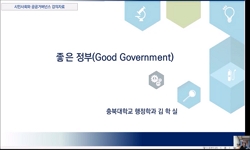This analysis aims to propose a prospective governance model to solve noise pollution problems in South Korea, with the neighbor noise issue central to the process. In Korea, where more than half of the population lives in apartment buildings, neighbo...
http://chineseinput.net/에서 pinyin(병음)방식으로 중국어를 변환할 수 있습니다.
변환된 중국어를 복사하여 사용하시면 됩니다.
- 中文 을 입력하시려면 zhongwen을 입력하시고 space를누르시면됩니다.
- 北京 을 입력하시려면 beijing을 입력하시고 space를 누르시면 됩니다.
https://www.riss.kr/link?id=A108574419
- 저자
- 발행기관
- 학술지명
- 권호사항
-
발행연도
2023
-
작성언어
-
- 주제어
-
KDC
349
-
등재정보
미등재
-
자료형태
학술저널
-
수록면
82-106(25쪽)
- 제공처
-
0
상세조회 -
0
다운로드
부가정보
다국어 초록 (Multilingual Abstract)
This analysis aims to propose a prospective governance model to solve noise pollution problems in South Korea, with the neighbor noise issue central to the process. In Korea, where more than half of the population lives in apartment buildings, neighbor noise is one of the main reasons that lead to social problems. Neighbor noise causes feuds and conflicts among residents, which could result in physical violence and, in the worst cases, murder. Noise pollution problems, therefore, should not be seen solely as noise issues. The causes of noise pollution, the forms of conflicts caused by noise pollution, and the solutions to noise problems all lie somewhere between sound and politics, demonstrating the inextricable link between the two. Therefore, it is important to consider the political perspective when addressing noise problems. Until now, noise pollution problems have mainly been addressed within the context of noise and vibration, but this analysis proposes utilizing the civil society strategy model to mitigate, if not eradicate, the social problems caused by neighbor noise. This analysis proceeds in the following ways. First, it looks at the current situation of the governance system regarding noise pollution issues. It then introduces a theoretical framework that can connect the noise problems and a political perspective, in which five sectors are included: people, places, society, private, and public. Next, before applying the framework, the study further investigates the background and characteristics of problems regarding neighbor noise in apartment buildings. The fourth section discusses the applicability of the aforementioned model in terms of solving the noise problems. Finally, the last section summarizes the main points of this analysis.
목차 (Table of Contents)
- Ⅰ. Introduction
- Ⅱ. Conceptual framework
- Ⅲ. Neighbor noise problem
- Ⅳ. Practical Application
- Ⅴ. Conclusion
- Ⅰ. Introduction
- Ⅱ. Conceptual framework
- Ⅲ. Neighbor noise problem
- Ⅳ. Practical Application
- Ⅴ. Conclusion
- References
동일학술지(권/호) 다른 논문
-
- 한양대학교 유럽-아프리카연구소
- Sung-Jin Park(Sung-Jin Park)
- 2023
- 미등재
-
- 한양대학교 유럽-아프리카연구소
- 이상묵(Sang-Mook Lee)
- 2023
- 미등재
-
- 한양대학교 유럽-아프리카연구소
- 나용우(Yong-Woo Na)
- 2023
- 미등재




 스콜라
스콜라






